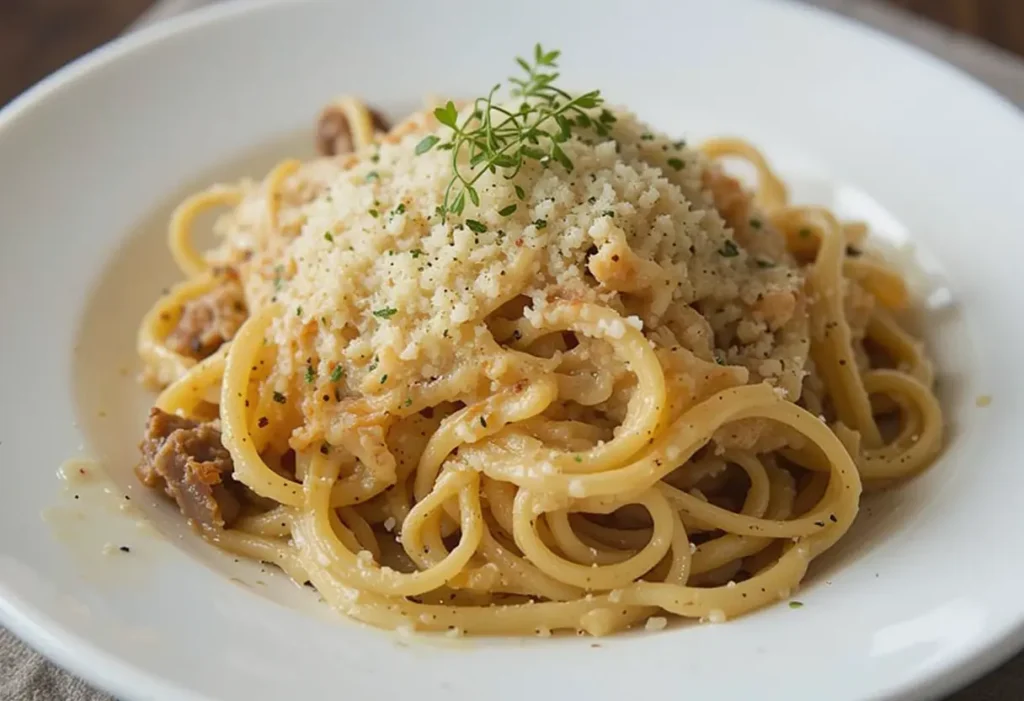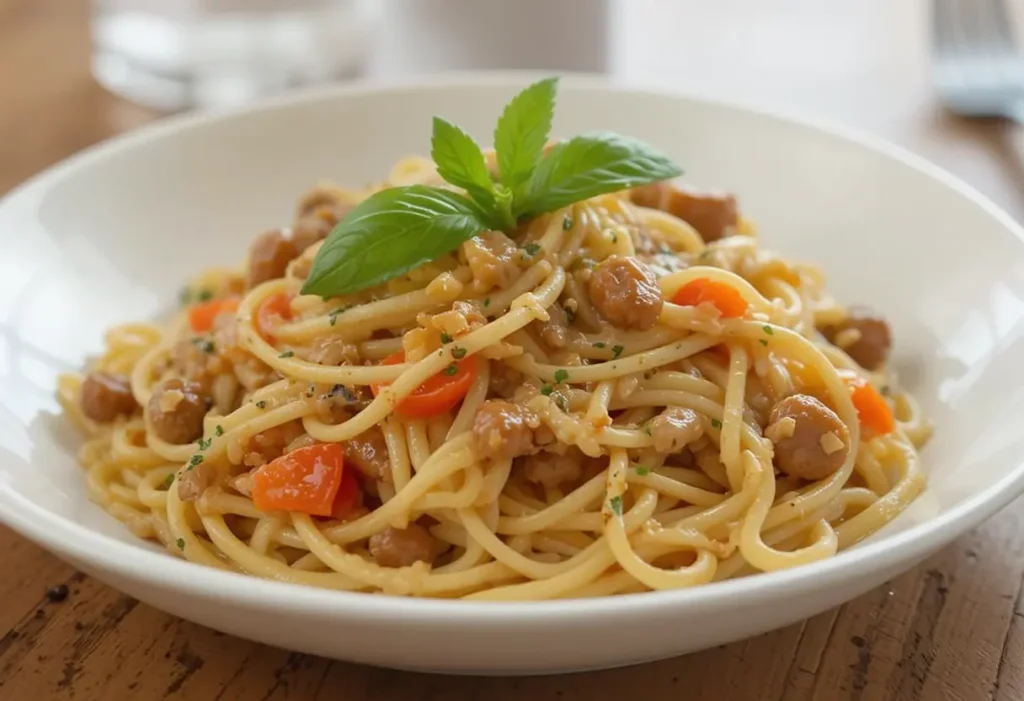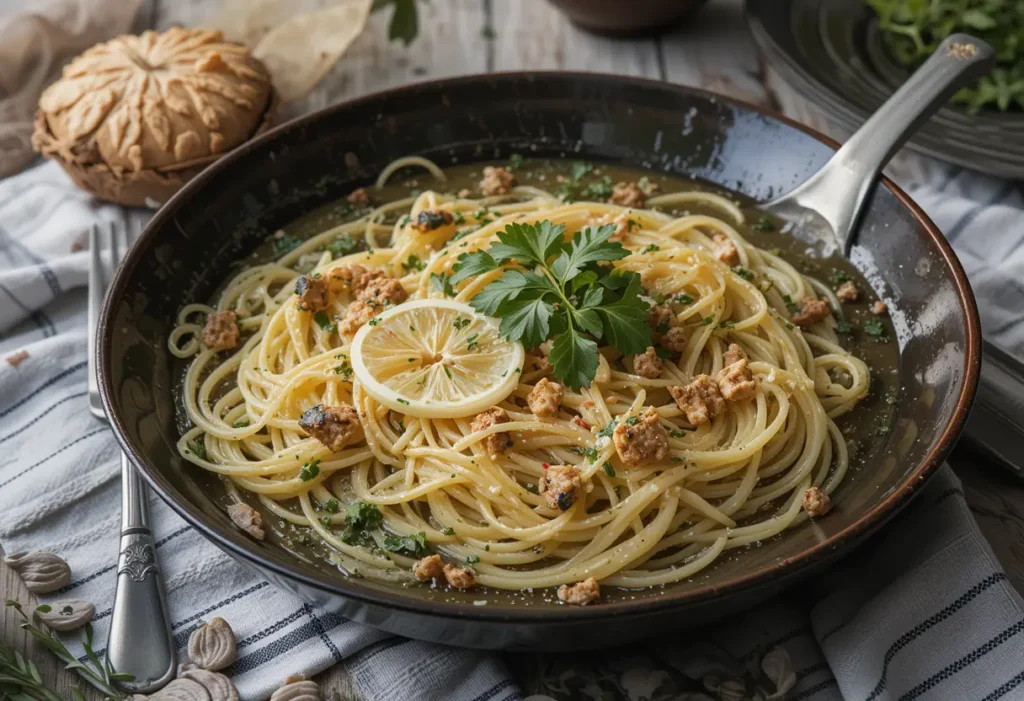What does carbonara mean in Italian food? This is a question many food enthusiasts ask when they encounter this iconic dish. Carbonara is a classic Italian pasta recipe that showcases the country’s culinary philosophy: simple, high-quality ingredients creating bold and memorable flavors. With its creamy sauce, savory guanciale, and sharp Pecorino Romano cheese, carbonara has earned its place as a global favorite. But beyond its deliciousness, this dish carries a rich history rooted in Italian tradition.
The Etymology of Carbonara
The term carbonara originates from the Italian word carbonaro, which translates to “coal burner.” Many believe that the dish was created as a simple yet hearty meal for coal workers in the Lazio region. Its rustic roots and straightforward preparation reflect the essence of traditional Italian cooking.
For further insights into the world of Italian cuisine, explore this guide on creamy spaghetti carbonara, which explains its rich ingredients and preparation techniques.
Historical Roots and Popular Theories
The origins of carbonar a are surrounded by mystery, yet several compelling theories exist:
- Neapolitan Influence: Some food historians trace the dish back to pasta cacio e uova, a traditional Neapolitan pasta that blends cheese, eggs, and pasta.
- World War II Connection: Another popular theory credits American soldiers during World War II. These soldiers introduced eggs and bacon to Italian kitchens, inspiring a recipe that became the foundation of modern carbonara.
- First Written Records: The dish was first documented in La Stampa in 1950, before gaining international recognition through Elizabeth David’s cookbook Italian Food.

Learn more about its evolution in what are the ingredients of creamy carbonara.
Traditional Recipe: What Makes It Authentic?
A truly authentic carbonara relies on simplicity and the quality of its ingredients. To answer what does carbonara mean in Italian food, it’s essential to look at the components that define it:
- Spaghetti: The preferred pasta type, although bucatini and fettuccine are also traditional.
- Guanciale: Cured pork cheek is a must, offering unparalleled richness and flavor.
- Pecorino Romano: This aged sheep’s milk cheese provides sharpness and saltiness.
- Egg Yolks: These create the luscious, creamy texture carbonara is known for.
- Black Pepper: A simple seasoning that enhances the overall taste.
What It Doesn’t Include:
It’s worth noting that authentic carbonar a excludes cream, garlic, and butter, which are often incorrectly associated with the dish.
For tips on achieving the perfect balance of ingredients, see what is the golden rule of cooking a carbonara.
Modern Interpretations and Global Twists
While traditionalists defend the classic recipe, modern chefs and home cooks have embraced creative variations. These reinterpretations highlight the dish’s adaptability while maintaining its essence.
Italian Variations
- Carbonara di Mare: This coastal version swaps guanciale for seafood like shrimp or clams.
- Tyrolean Carbonara: A northern Italian twist featuring speck, Malga cheese, and other Alpine ingredients.
Global Innovations
- Vegetarian Carbonara: Replacing pork with roasted vegetables or smoked mushrooms creates a delicious meat-free option.
- Fusion Recipes: Ingredients like miso, soy sauce, or chili flakes add unique flavors to the classic recipe.
For a deeper dive into variations, explore what are the ingredients of spaghetti carbonara.
How to Perfect Your Carbonara
Making carbonar a at home requires attention to detail and respect for tradition. Here are some tips to ensure success:
- Choose High-Quality Ingredients: Authentic Pecorino Romano and guanciale are key.
- Cook Pasta Al Dente: It provides the best texture for soaking up the creamy sauce.
- Emulsify the Sauce: Use reserved pasta water to blend egg yolks and cheese seamlessly.
- Avoid Scrambling Eggs: Toss pasta with the sauce off the heat to maintain creaminess.

FAQs
1. What does carbonara mean in Italian food?
The name translates to “coal burner,” reflecting its origins as a simple, rustic meal for coal workers.
2. Why is cream not included in traditional recipes?
The dish achieves its creaminess naturally from the emulsification of egg yolks, cheese, and pasta water, making cream unnecessary.
3. Can pancetta replace guanciale?
Yes, but guanciale is preferred for its richer flavor and traditional authenticity.
4. What are some other iconic Italian dishes?
Classics like cacio e pepe, amatriciana, and lasagna alla Bolognese showcase the diversity of Italian culinary tradition.
Conclusion: A Culinary Legacy
To truly understand what does carbonar a mean in Italian food, one must appreciate its humble origins, reliance on high-quality ingredients, and timeless appeal. From its roots as a coal worker’s meal to its place as a global culinary icon, carbonar a exemplifies the heart and soul of Italian cooking.
Explore the art of creating this dish yourself by following this detailed guide on creamy spaghetti carbonara. Its simplicity, when mastered, creates a dish that unites people across cultures and generations.
By honoring tradition while embracing modern interpretations, carbonar a continues to inspire food lovers worldwide, proving that great cuisine doesn’t require complexity—just care, creativity, and respect for its roots.

